 Customer Service
Customer Service

10 July, 2023

Customer service has emerged as a critical differentiator for companies seeking success in the ever-evolving business landscape. The ability to deliver exceptional experiences and meet customer expectations has become paramount. Behind every satisfied customer lies a wealth of data that can provide valuable insights.
Customer service statistics have become the compass guiding businesses toward better decision-making and improved customer experiences. To navigate this dynamic terrain, understanding customer service statistics is vital. These powerful insights provide a compass for businesses to chart their course toward unparalleled customer satisfaction.
In this article, we delve into the top 20 customer service statistics that every business owner, manager, and customer service professional should be aware of. From the impact of personalized interactions to the rise of self-service channels, these statistics shed light on the rapidly evolving customer service landscape. Simultaneously, they offer invaluable guidance for companies aiming to thrive in the competitive marketplace.
Let’s explore these illuminating figures and discover the potential they hold for transforming your business.
Businesses with high customer satisfaction rates outperformed their competitors by a staggering 20% in terms of revenue growth.
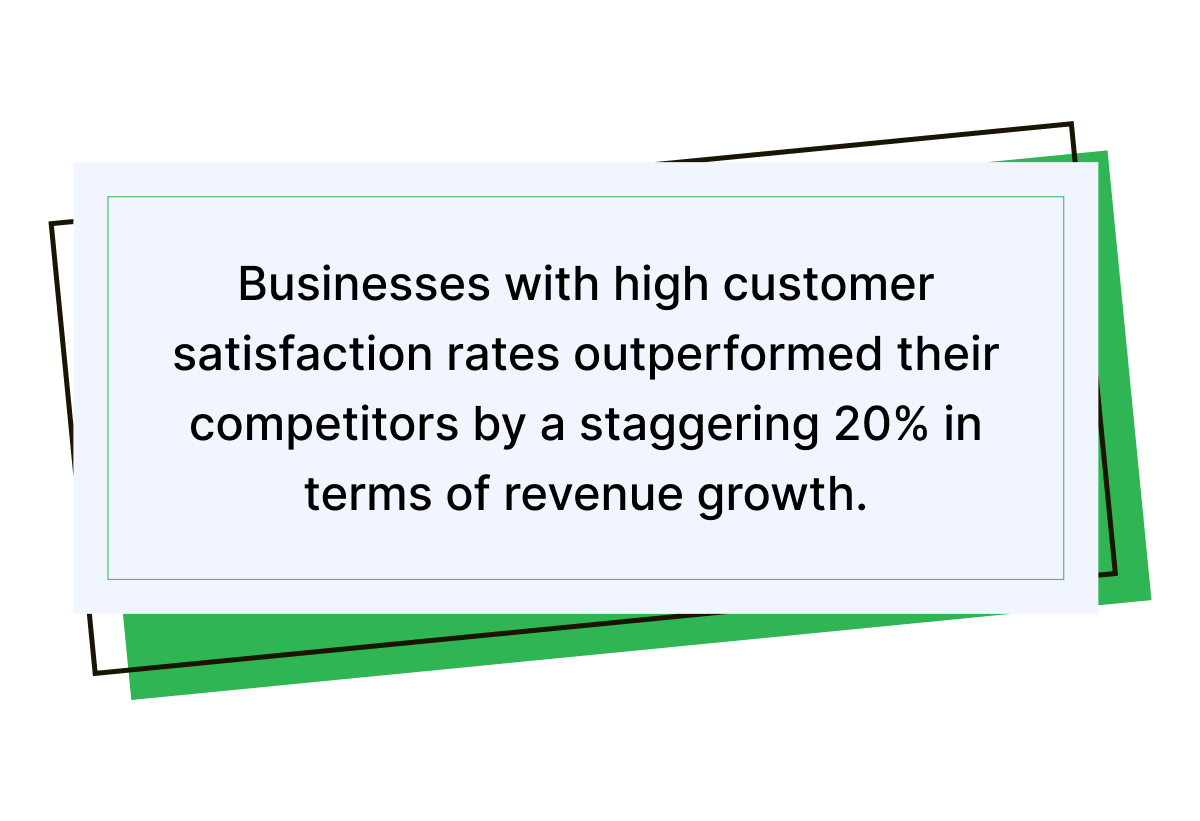
Customer satisfaction plays a pivotal role in determining the success of a business. This statistic highlights the significant impact that satisfied customers can have on a company’s performance and bottom line. When customers are happy with the products, services, and support they receive, they are more likely to remain loyal, make repeat purchases, and even recommend the brand to others. Satisfied customers become brand advocates, driving positive word-of-mouth and contributing to the growth and profitability of a business.
86% of customers are willing to pay more for a better customer experience.
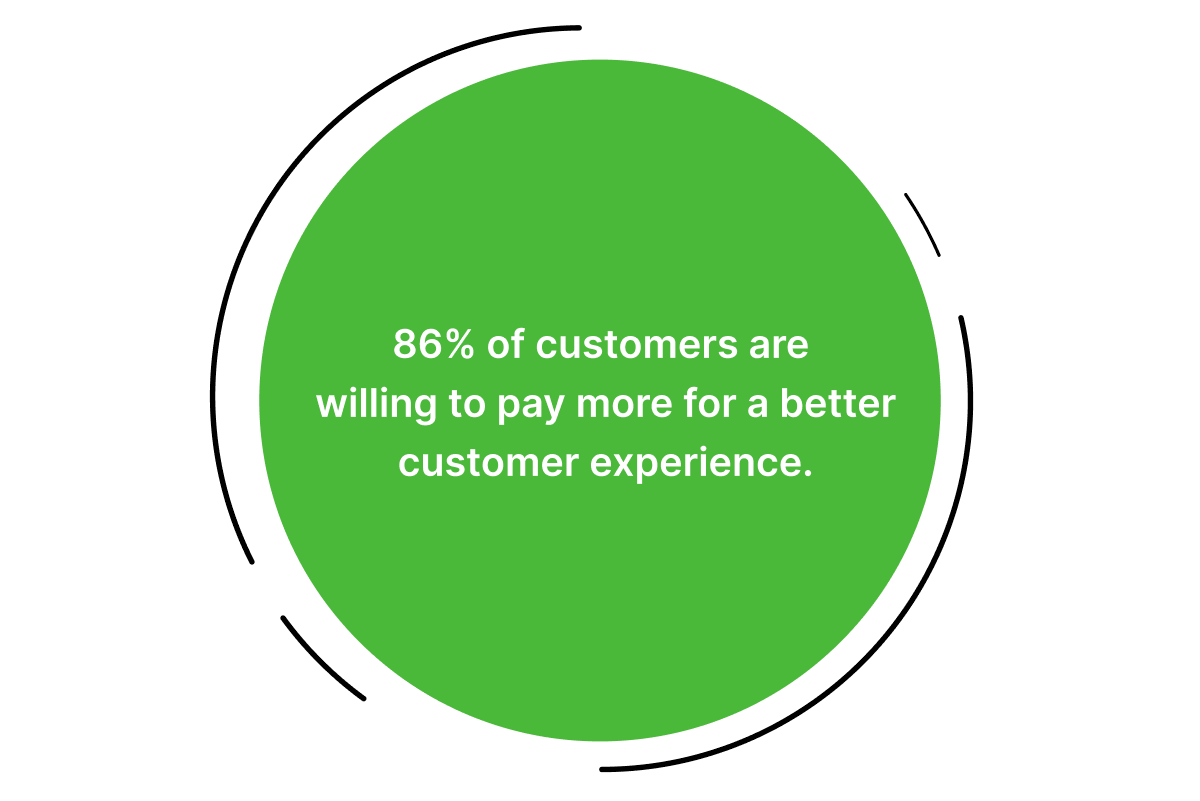
This statistic highlights the crucial role that customer experience plays in driving customer loyalty and advocacy. When customers have a positive experience with a company, they are not only more likely to become loyal repeat customers, but they also become advocates, spreading positive word-of-mouth and recommending the brand to others. By investing in delivering exceptional customer experiences, businesses can not only increase customer retention but also attract new customers through the power of positive referrals. The implication is clear: prioritizing customer experience is a strategic imperative for sustainable business growth.
Research indicates that digital customer service channels, such as chat and social media, have experienced a 54% increase in popularity and effectiveness compared to traditional channels like phone and email.
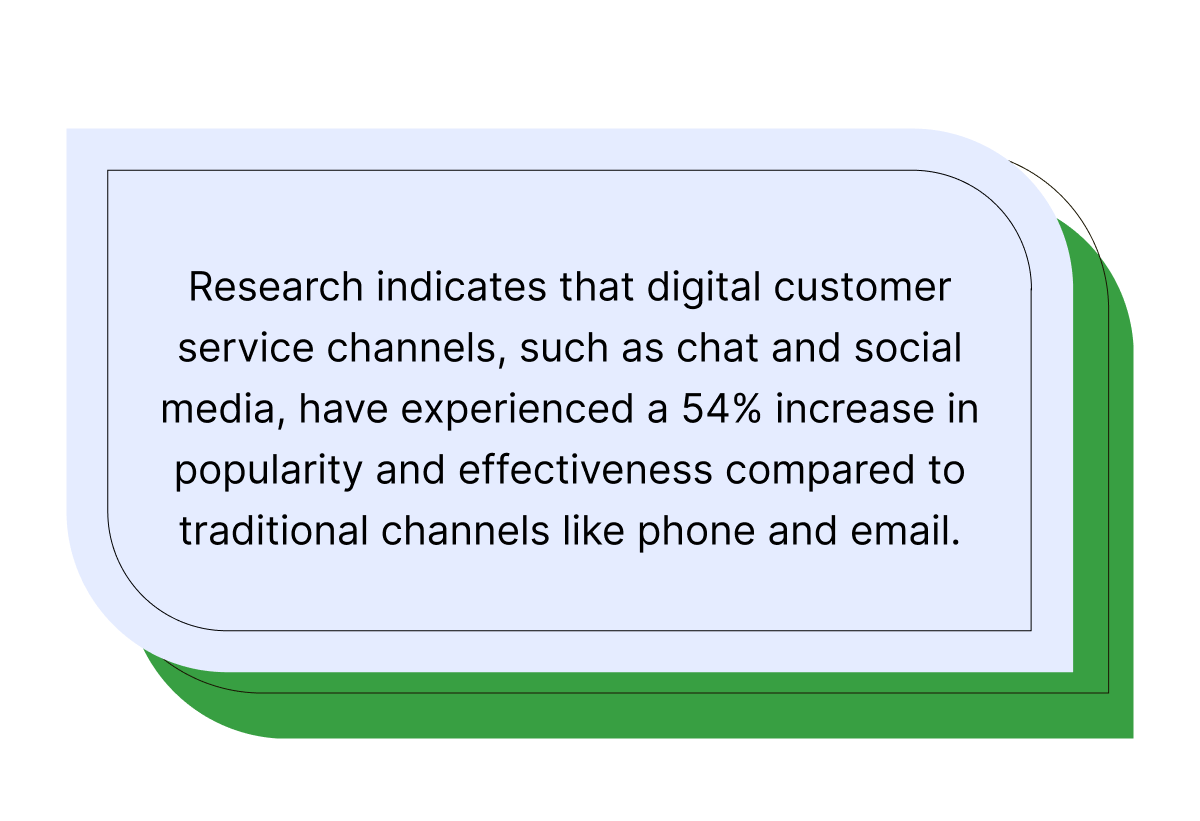
Traditional channels, such as phone and email, have long been the go-to options for customer service. While they continue to play a significant role, digital channels have gained popularity due to their convenience, speed, and accessibility. Chat platforms offer real-time assistance, reducing wait times and providing immediate resolutions. Social media channels enable public interactions, allowing companies to showcase their responsiveness and address customer queries in a transparent manner.
However, it is essential to strike a balance and ensure that all channels are effectively managed to meet customer expectations and maintain consistent service quality.
In recent years, there has been a notable shift in customer preferences towards digital channels. Increasingly, customers seek self-service options and expect quick resolutions to their issues. The convenience of digital channels, combined with the rise of mobile usage and social media platforms, has led to a growing preference for chat, social media, and even AI(Artificial Intelligence)-powered virtual assistants.
However, it is important to recognize that different customer segments may have varying preferences, and offering a diverse range of service channels can accommodate individual needs and preferences, ultimately enhancing overall customer satisfaction.
Studies show that the adoption and usage of self-service tools have increased significantly, with 91% of customers utilizing a company’s knowledge base, FAQs, or online forums for self-help.
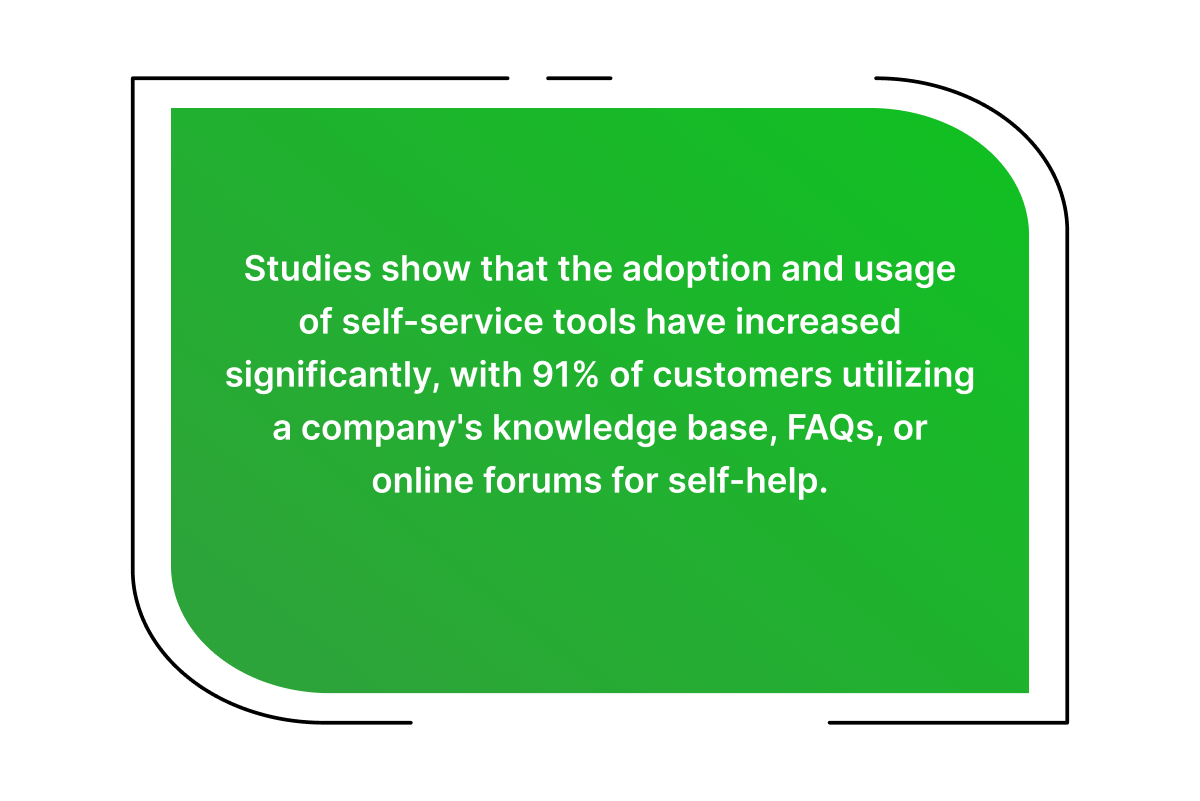
This showcases the widespread acceptance and reliance on self-service options among customers. As technology continues to advance and consumers become more tech-savvy, businesses should prioritize building robust self-service platforms to cater to customer preferences and provide seamless assistance.
67% of customers prefer self-service options for finding answers to their questions or resolving issues. This rising popularity can be attributed to several factors.
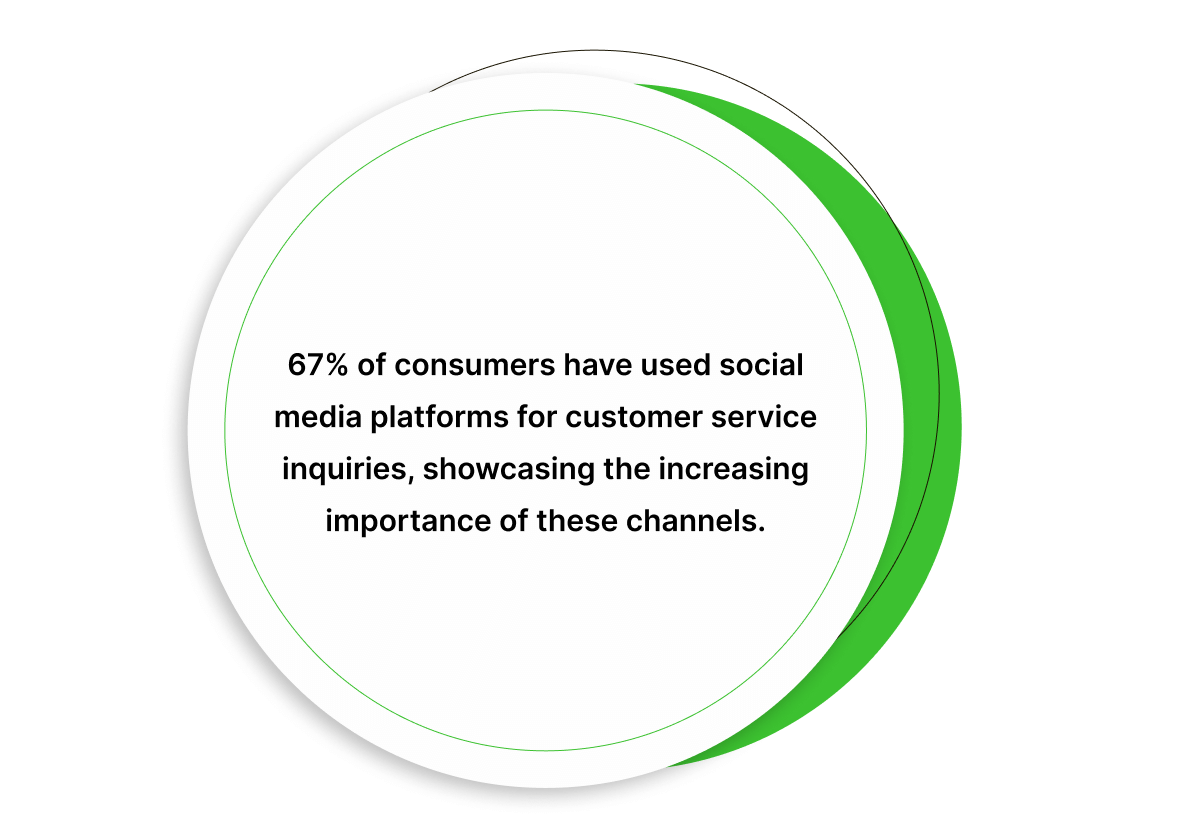
82% of customers expect an immediate response from companies, with 32% expecting a response within 30 minutes across various channels.
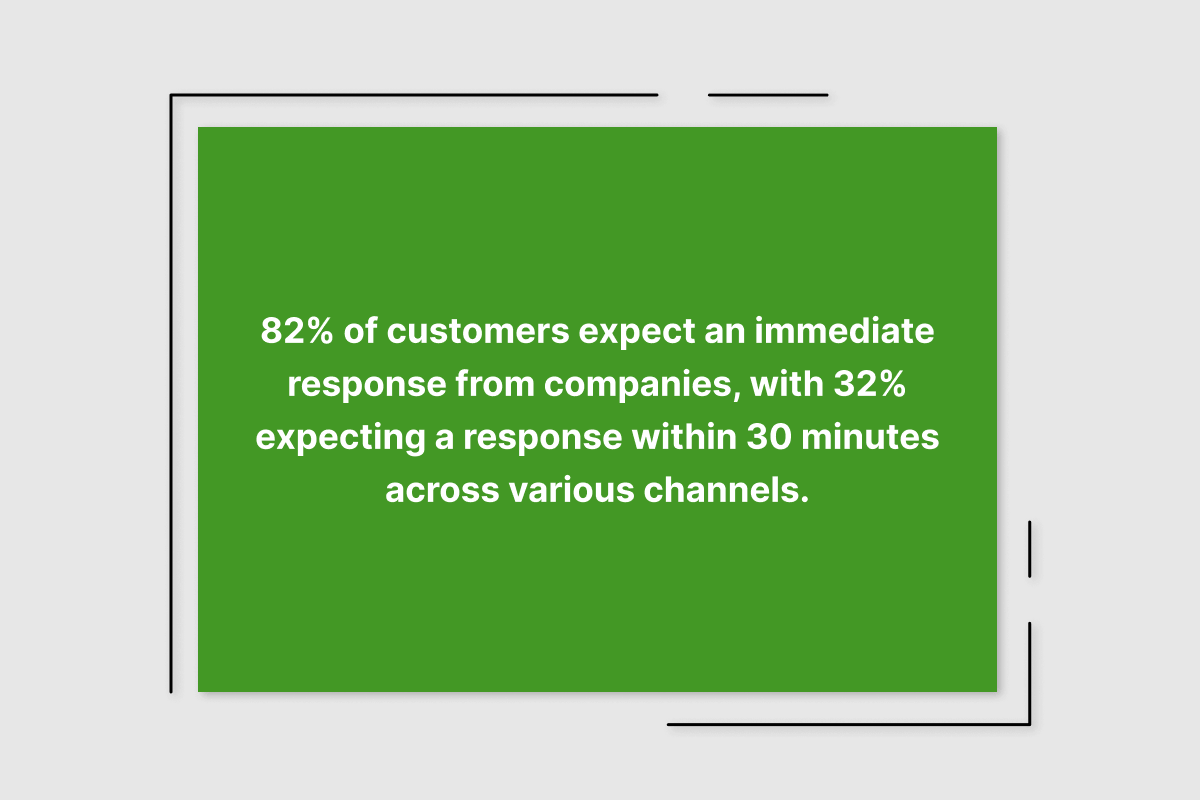
The time taken to respond to customer inquiries significantly impacts their satisfaction levels. A quick and timely response demonstrates a company’s commitment to customer service and shows that their concerns are valued. Conversely, delayed responses can lead to frustration, diminished trust, and even customer churn.
67% of consumers have used social media platforms for customer service inquiries, showcasing the increasing importance of these channels.
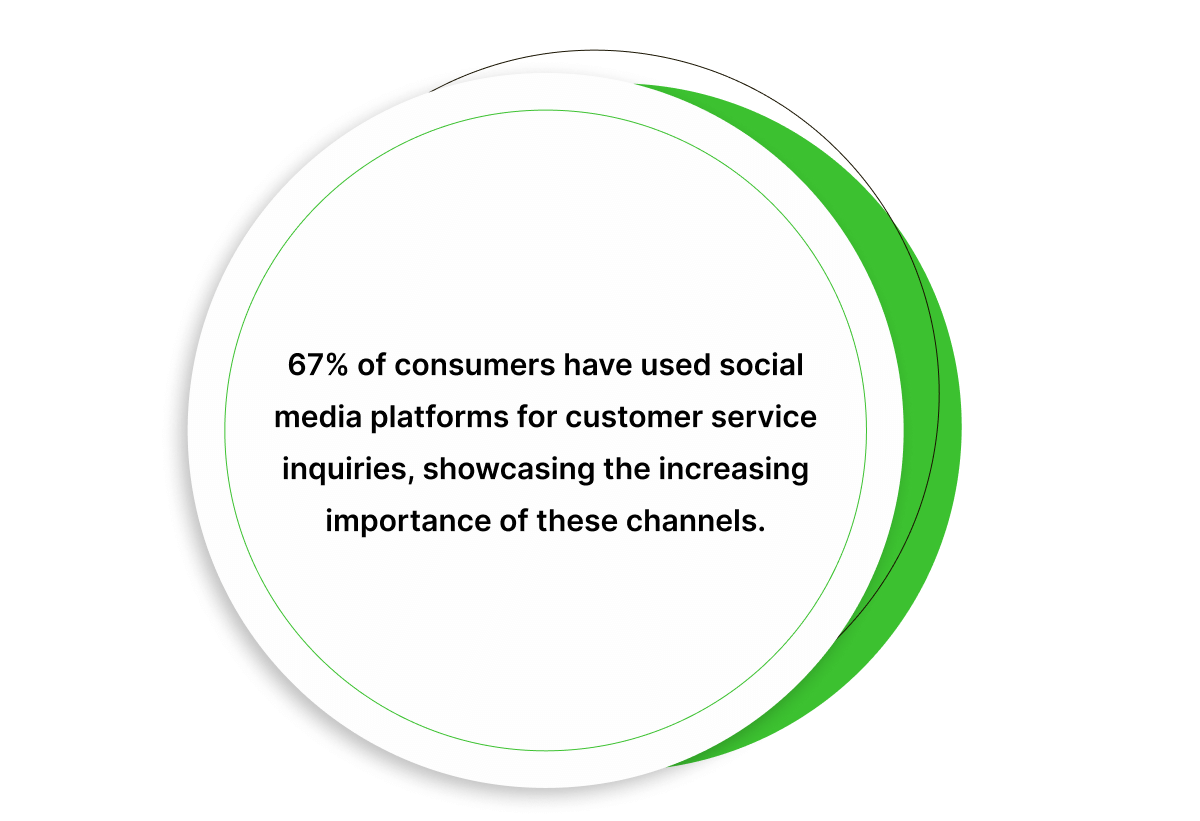
Social media has become a go-to platform for customers to seek assistance, share feedback, and voice their concerns. It has transformed into a powerful avenue for businesses to engage with their customers in real-time and provide timely support.
These statistics emphasize the significant impact social media responsiveness has on customer perception and the potential it holds for building or damaging brand loyalty.
Increasing customer retention rates by just 5% can boost profits by 25% to 95%. On the flip side, the cost of customer churn can be staggering, with acquiring new customers estimated to be five to 25 times more expensive than retaining existing ones.
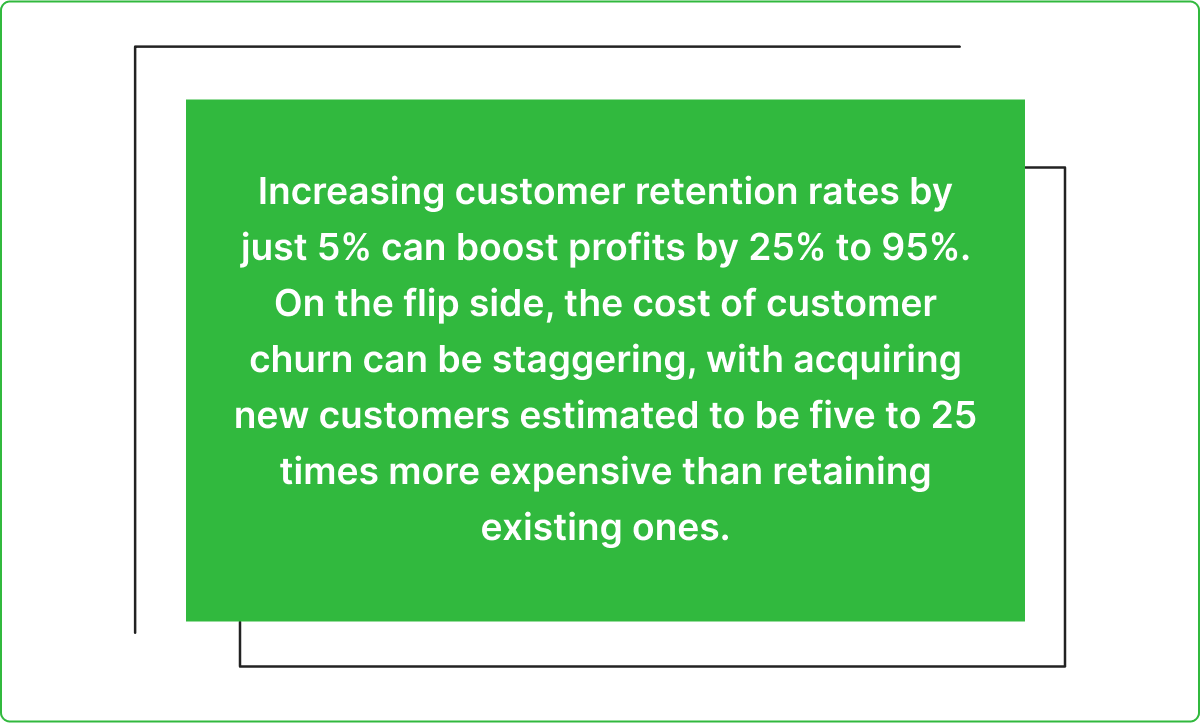
These statistics highlight the critical impact of customer retention and the substantial financial implications of losing customers.
86% of customers are willing to pay more for better customer experiences. Moreover, 82% of customers have stopped doing business with a company due to poor customer service.
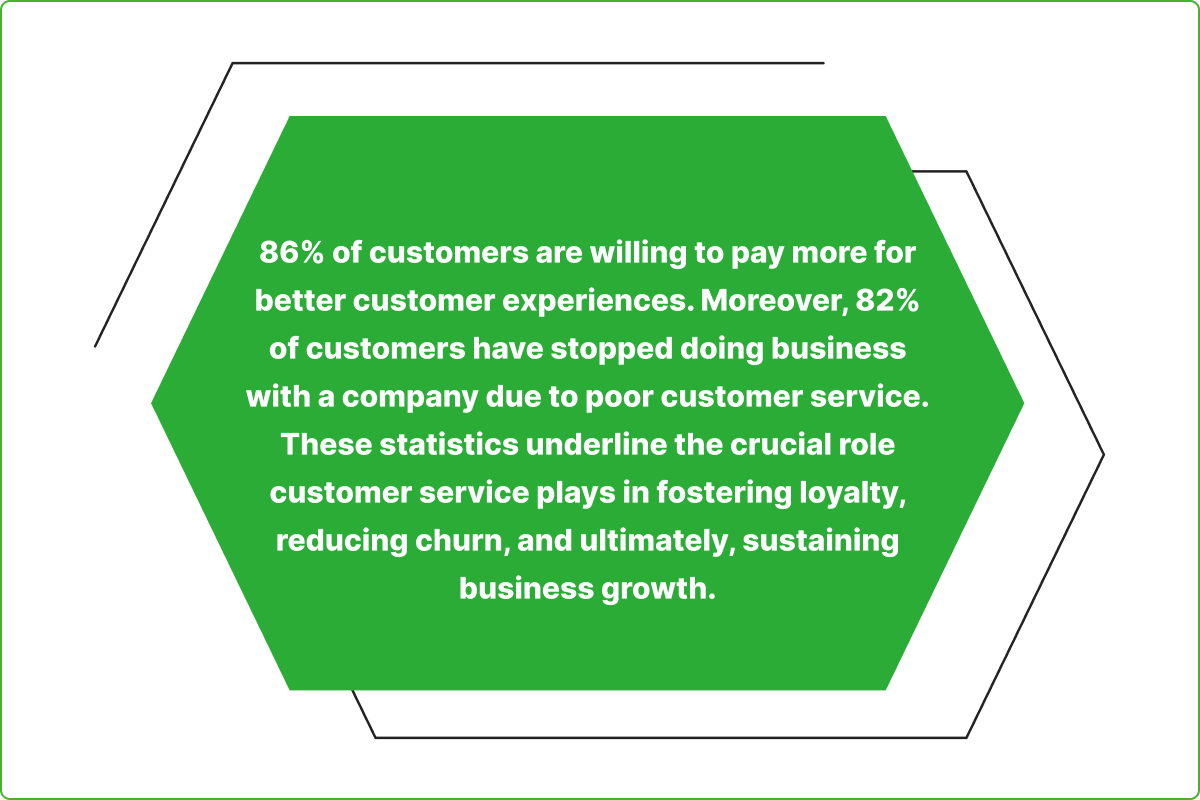
These statistics underline the crucial role customer service plays in fostering loyalty, reducing churn, and ultimately, sustaining business growth.
63% of customers prefer messaging an AI-powered chatbot for customer service.
As technology advances, AI and chatbots are revolutionizing customer service by providing instant, round-the-clock support, streamlining processes, and delivering personalized experiences.
These insights emphasize the need for businesses to adapt to changing customer expectations and embrace innovative technologies to stay competitive.
According to a study by Epsilon, 80% of consumers are more likely to make a purchase when brands offer personalized experiences.
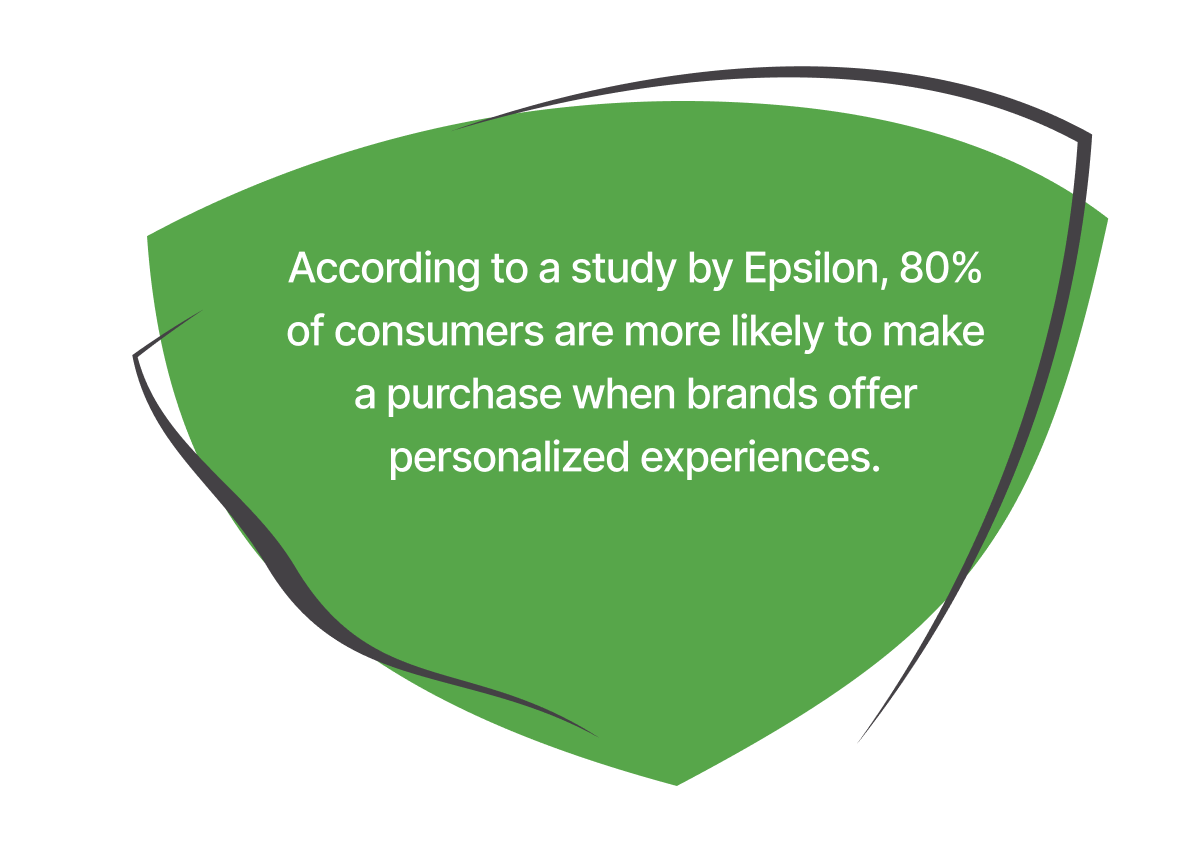
This statistic highlights the effectiveness of personalized marketing campaigns in capturing customer attention, increasing engagement, and driving conversions.
These insights emphasize the importance of personalized customer experiences in building strong customer relationships, enhancing brand loyalty, and increasing customer satisfaction.
These statistics indicate that personalization has a significant impact on customer loyalty and repeat business by creating more relevant and tailored experiences that resonate with customers and keep them coming back.
According to a survey by American Express, 70% of customers are willing to spend more money with companies that provide excellent customer service.
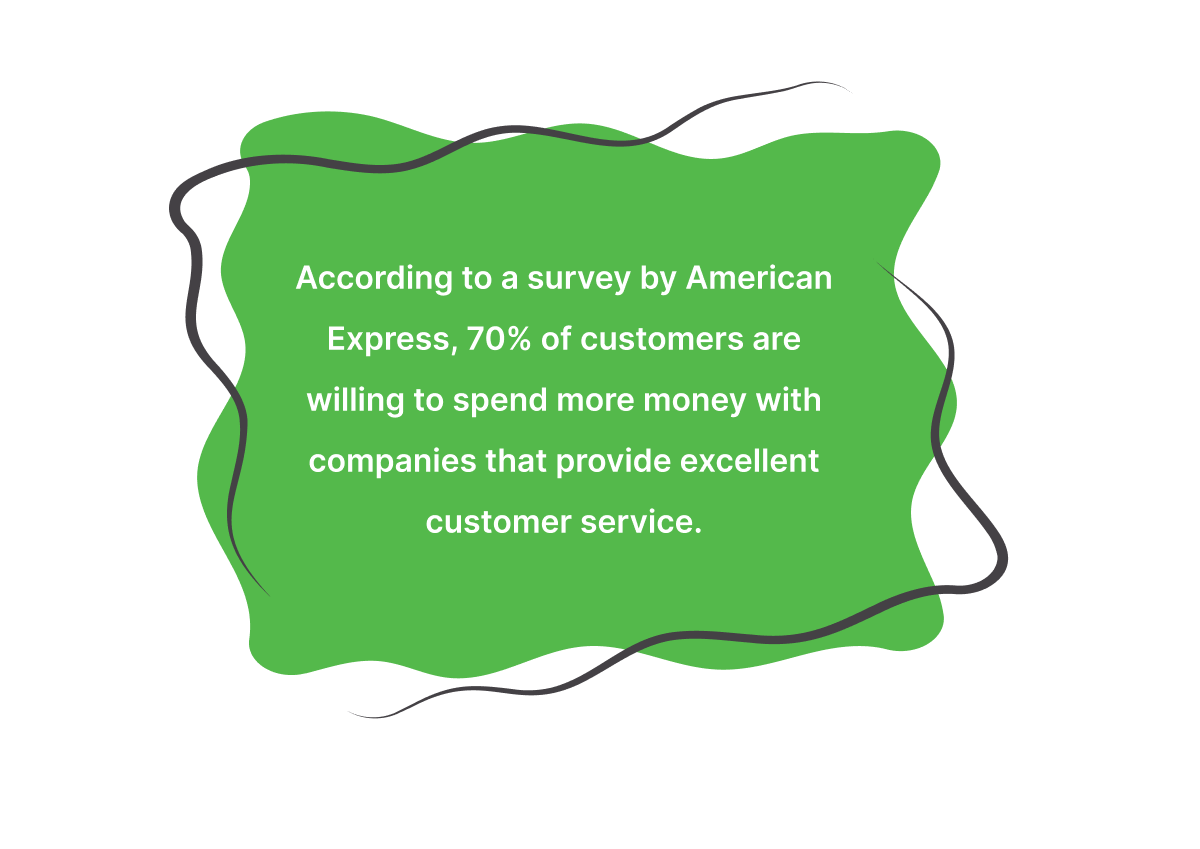
This insight demonstrates that customers highly value knowledgeable and empowered employees, recognizing the positive impact they have on the overall customer service experience.
A report by the American Society for Training and Development (ASTD) states that companies that invest in comprehensive training programs for their employees achieve a 218% higher income per employee compared to companies with ineffective training.
This statistic highlights the strong correlation between employee training and improved customer service, as well-trained employees are better equipped to meet customer needs, resolve issues, and deliver exceptional experiences.
These statistics emphasize the crucial role of employee engagement in delivering exceptional customer service, as engaged employees are more motivated, committed, and likely to go above and beyond for customers.
According to a survey by Pew Research Center, 96% of Americans now own a cellphone, and 81% own a smartphone.
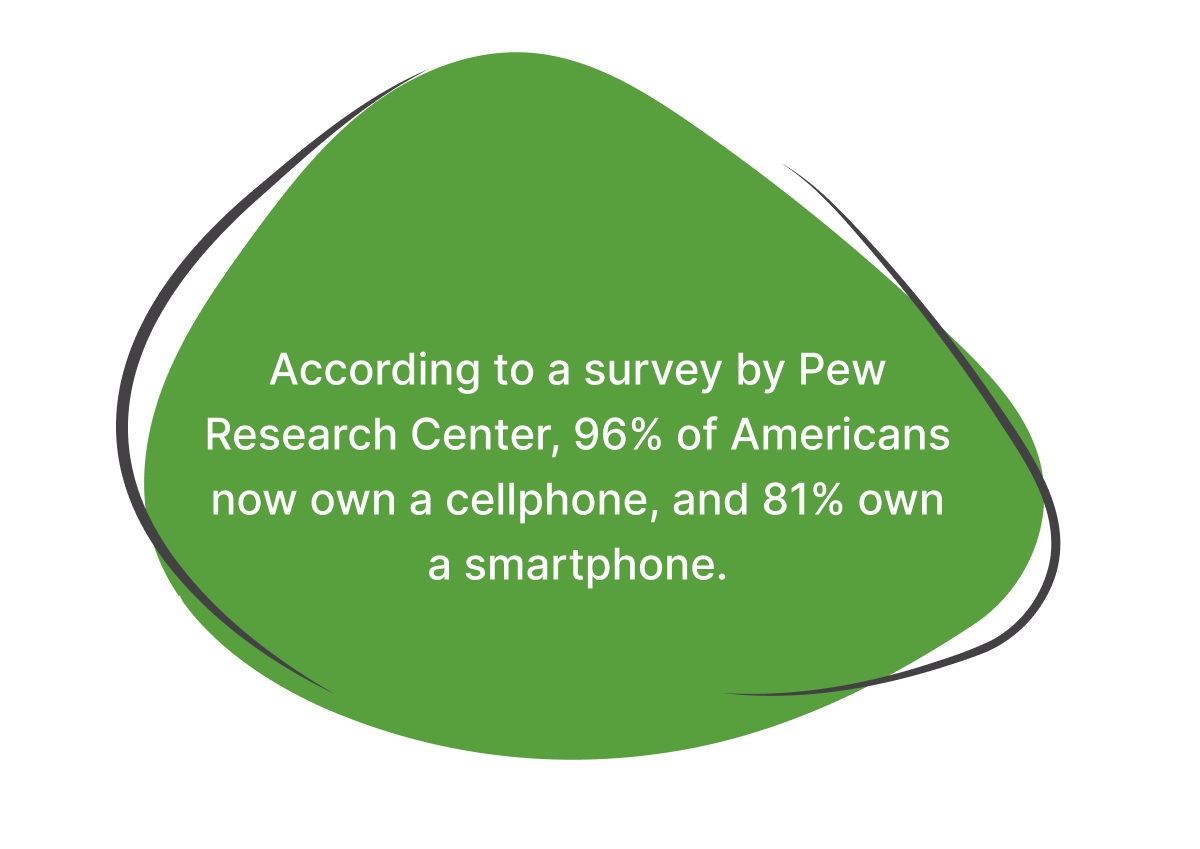
This statistic demonstrates the widespread popularity of mobile devices and indicates the growing demand for mobile-service options among consumers.
These insights highlight the significant growth of mobile customer service channels and the increasing adoption of mobile technology for customer support purposes.
These statistics underline the positive impact of mobile service on customer satisfaction and convenience, as it allows customers to access support anytime, anywhere, and through their preferred mobile channels.
According to research, the average complaint rate across industries is around 4% to 6%.
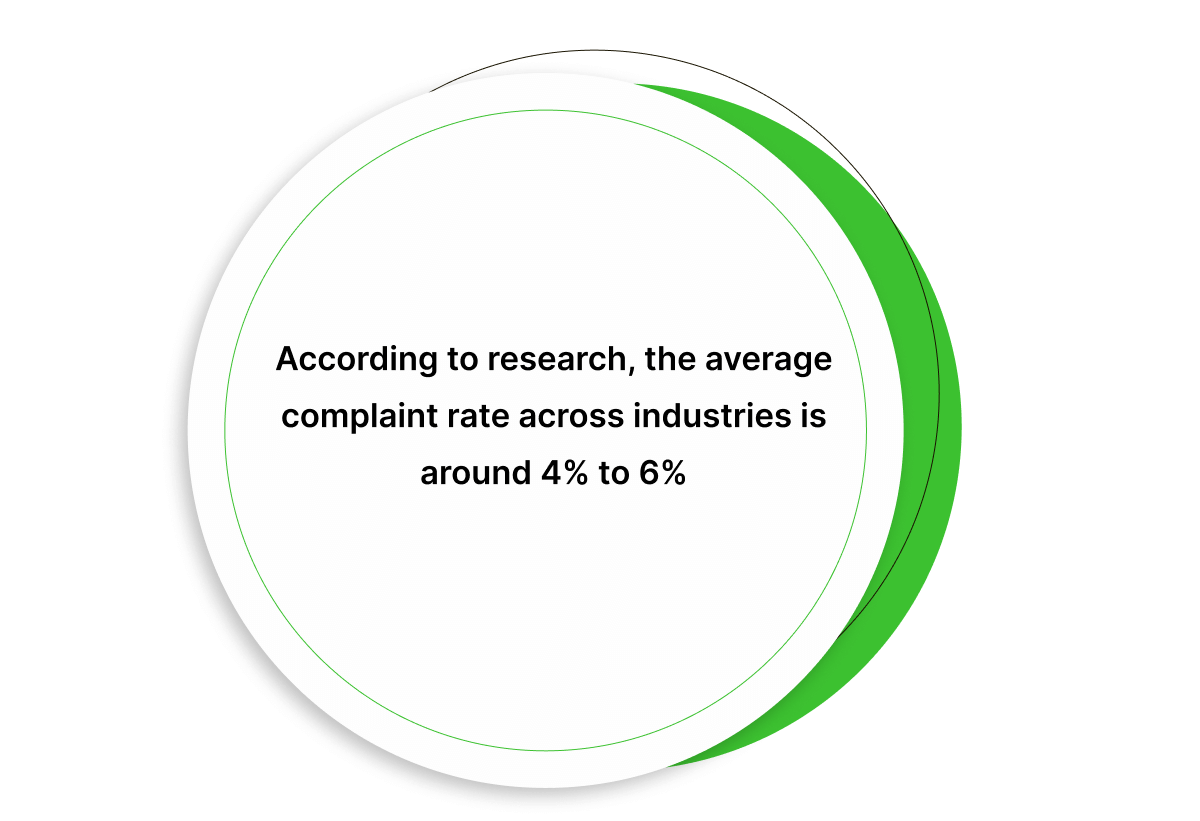
This means that for every 100 customers who experience poor service, only a small percentage will actually make a formal complaint. However, the exact statistic on the number of customers who complain about poor service can vary depending on the industry, company, and specific circumstances. Moreover, it is widely acknowledged that a significant portion of dissatisfied customers do not voice their complaints directly to the company.
With the rise of social media platforms, customers have gained a powerful voice to express their complaints and dissatisfaction publicly.
According to research conducted by Edison Research, around 45% of consumers in the United States have used social media to complain about a company’s product or service.
This highlights the importance of monitoring and effectively addressing customer complaints on social media platforms.
Effective complaint resolution plays a vital role in shaping customer loyalty and advocacy. When companies respond promptly and satisfactorily to customer complaints, it can lead to increased customer satisfaction and loyalty.
Research suggests that customers who have their complaints resolved in their favor are more likely to continue doing business with the company and recommend it to others. In fact, a study conducted by the Technical Assistance Research Programs (TARP) found that customers whose complaints were resolved effectively became even more loyal than customers who had no complaints in the first place.
Therefore, complaint resolution can turn dissatisfied customers into loyal brand advocates if handled properly.
According to a survey conducted by the Corporate Executive Board (CEB), around 94% of customers who experience low-effort interactions are more likely to repurchase from the same company. Conversely, if customers face high levels of effort, such as long wait times, multiple transfers, or complex issue resolution processes, they are more inclined to switch to a competitor.
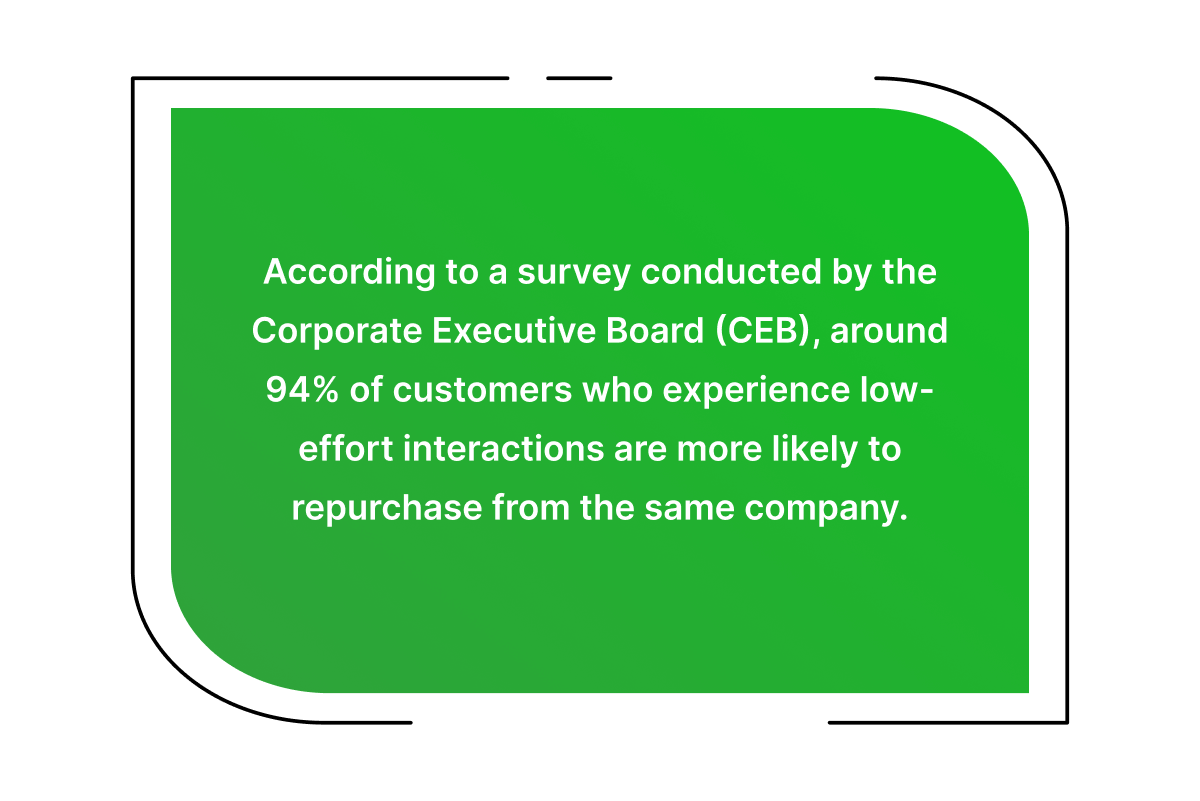
The specific percentage will depend on the industry, company, and customer expectations.
When companies make it easy for customers to resolve their issues or get the information they need, it enhances the overall customer experience.
Research by CEB suggests that customers who have low-effort experiences are more likely to recommend the company to others, increasing the potential for positive word-of-mouth and advocacy.
By minimizing customer effort, companies can improve customer satisfaction, retention, and ultimately drive growth through positive customer experiences.
Providing customers with the means to find information, resolve simple issues, or access account-related details without relying on direct assistance from customer service agents can significantly reduce customer effort.
According to Forrester Research, 72% of customers prefer using self-service support rather than contacting a company’s support center.
By offering intuitive self-service options such as FAQs, knowledge bases, chatbots, and online forums, companies empower customers to resolve their problems independently and efficiently. This not only reduces customer effort but also frees up resources for more complex and personalized customer interactions. Implementing effective self-service options can lead to improved customer satisfaction and loyalty.
Research by SQM Group indicates that customer satisfaction rates increase substantially when issues are resolved during the initial contact.
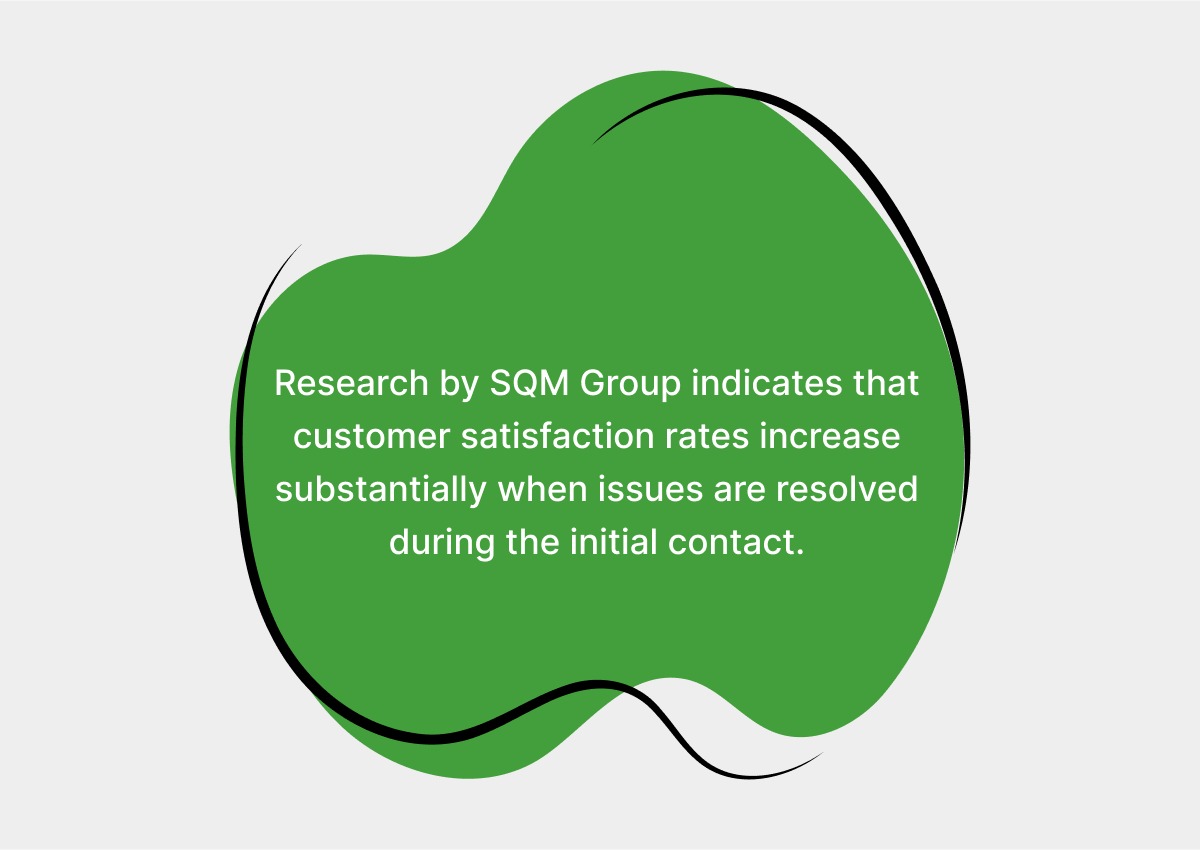
In fact, companies that achieve high first-contact resolution rates tend to have higher overall customer satisfaction scores. Resolving customer issues on the first contact has a significant positive impact on customer satisfaction. When customers have their problems resolved quickly and effectively without the need for repeated interactions, it enhances their perception of the company’s service quality and efficiency.
Studies consistently show that a significant number of customers are willing to switch if their initial customer service encounter is unsatisfactory.
According to a survey conducted by Accenture, approximately 68% of customers said they would switch to a competitor if they experienced poor customer service.
This highlights the critical importance of delivering a positive customer service experience from the first interaction to retain customers and prevent churn.
According to a survey conducted by Zendesk, 88% of customers are more likely to recommend a brand to others after having a positive customer service experience.
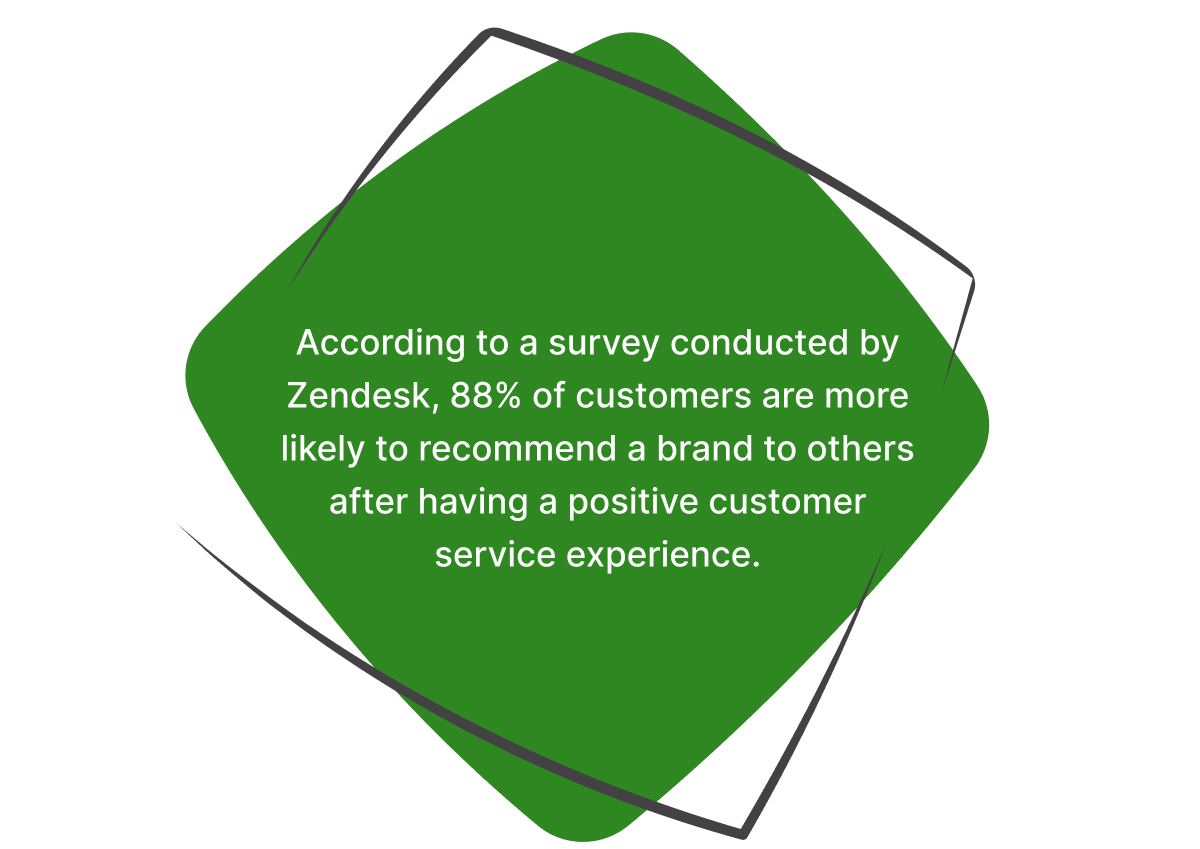
This indicates that a majority of satisfied customers are willing to advocate for a brand and spread positive word-of-mouth.
This demonstrates the power of positive customer experiences and referrals in driving business growth.
Research by PwC(Price water house Coopers International Limited) indicates that 73% of customers consider customer service as an essential factor in their brand loyalty. Additionally, a study by American Express found that 86% of customers are willing to pay more for a better customer experience.
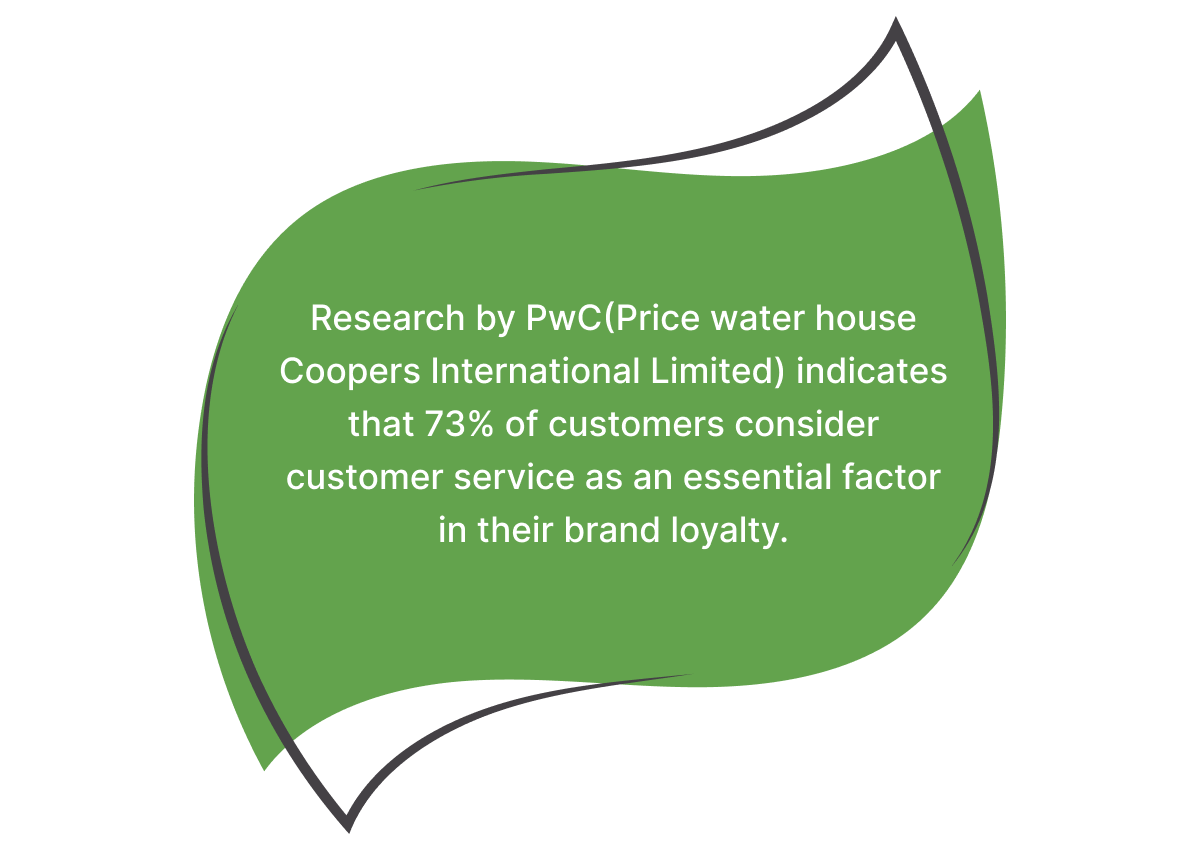
These statistics highlight the strong connection between exceptional customer service and brand loyalty.
These findings demonstrate the positive correlation between customer loyalty and business profitability.
According to Salesforce, 75% of consumers expect a consistent experience across multiple channels, including online, mobile, and in-store.
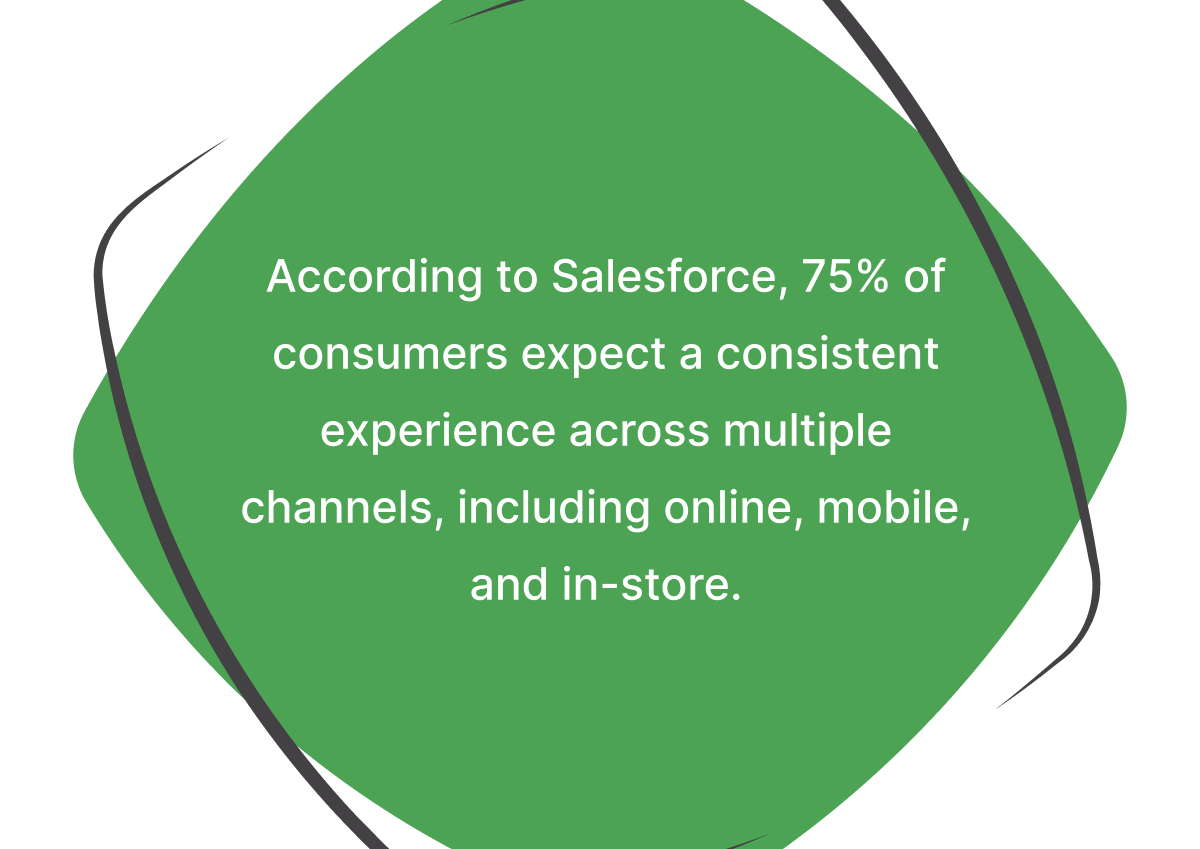
This means that they expect quick and efficient responses, personalized recommendations, easy access to information, and the ability to switch between channels without losing context. Meeting this omnichannel expectation is crucial for businesses to deliver superior customer experiences and build lasting relationships with their clientele.
These statistics emphasize the importance of omnichannel customer service in enhancing customer satisfaction and retention.
A survey by HubSpot found that 63% of respondents are comfortable with chatbots and automated systems when seeking customer support.
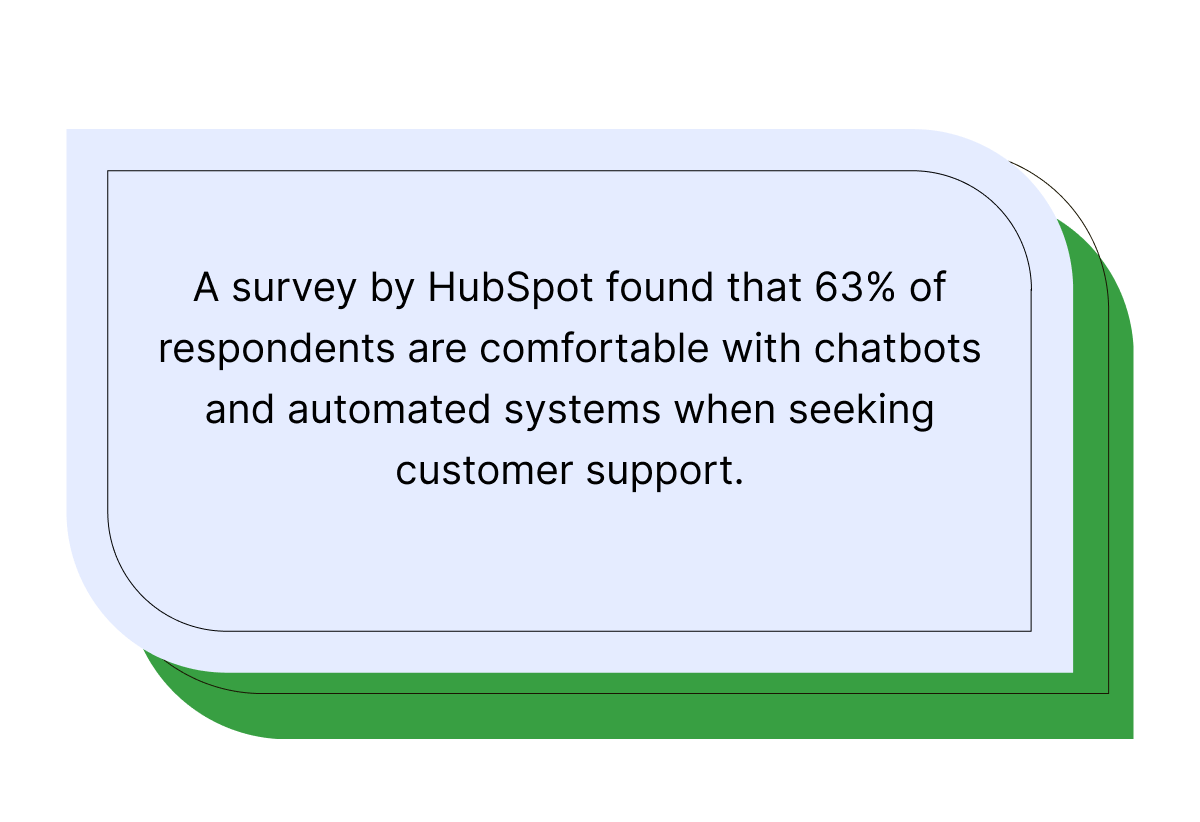
This indicates that a significant portion of customers are open to interacting with automated solutions.
This showcases the potential of AI and machine learning in improving customer service efficiency and personalization.
In this section, you are going to have an experience, where numbers will tell the story of customer satisfaction, loyalty, and operational efficiency. Three powerful indicators reign supreme: CSAT, NPS, and FCR. Let’s get introduced to these customer service metrics and measurements.
According to Harvard Business Review, companies that actively utilize customer analytics have an average return on investment of 241%.

Analyzing data helps identify pain points, customer preferences, and areas for improvement, enabling businesses to enhance the customer experience and build long-term loyalty.
Customer service metrics have a significant impact on overall business success.
According to a report by PwC, 73% of customers consider customer service as an essential factor in their purchasing decisions. Moreover, customers who have a positive service experience are likely to spend 140% more than those who had a poor experience.
By focusing on customer service metrics, businesses can drive customer loyalty, increase retention rates, and boost their bottom line.
According to Grand View Research, the video chat market is expected to reach $6.9 billion by 2025, driven by the increasing demand for real-time customer interactions.

By staying attuned to customer service trends and having a forward-thinking approach, businesses can position themselves as leaders in customer experience, foster customer loyalty, drive growth, and ultimately achieve long-term success.
According to a report by Dimension Data, 84% of organizations are already using or planning to use chatbots or virtual assistants for customer service. The same report highlights that 75% of companies are investing in mobile apps to enhance customer service experiences.
With advancements in technology, businesses are moving towards a more proactive and personalized approach. Automation, AI, and data analytics will play key roles in delivering efficient and personalized customer experiences. Customer service will become more predictive, anticipating customer needs and offering solutions even before issues arise.
In conclusion, the customer service landscape is constantly evolving, and businesses must prioritize customer service and adapt to these changing trends to thrive in today’s competitive environment. The top 20 customer service statistics discussed in this blog shed light on the growing importance of customer service in driving business success. From the increasing expectations for personalized experiences to the rising significance of omnichannel support, these statistics underscore the need for businesses to prioritize customer-centric strategies.